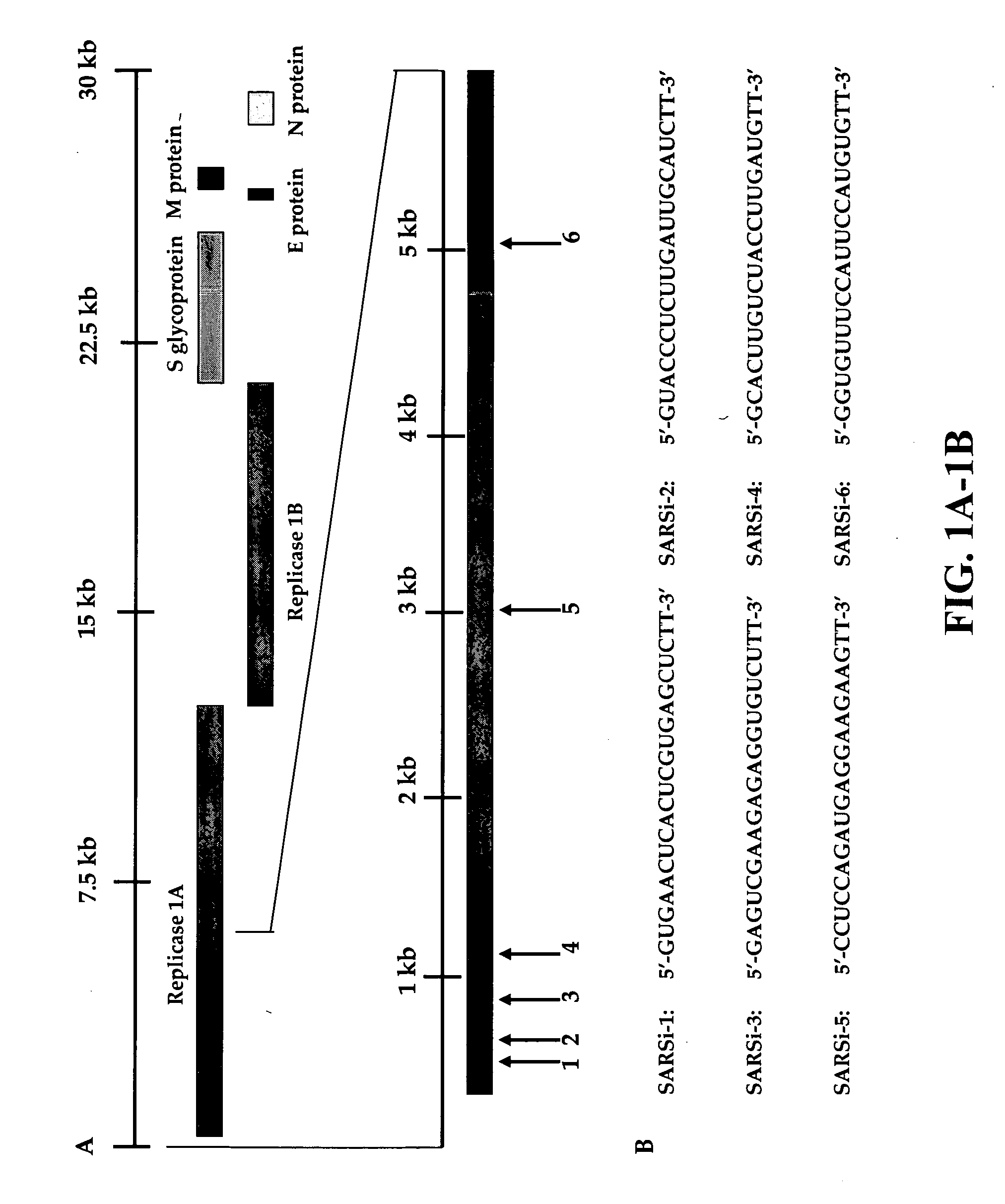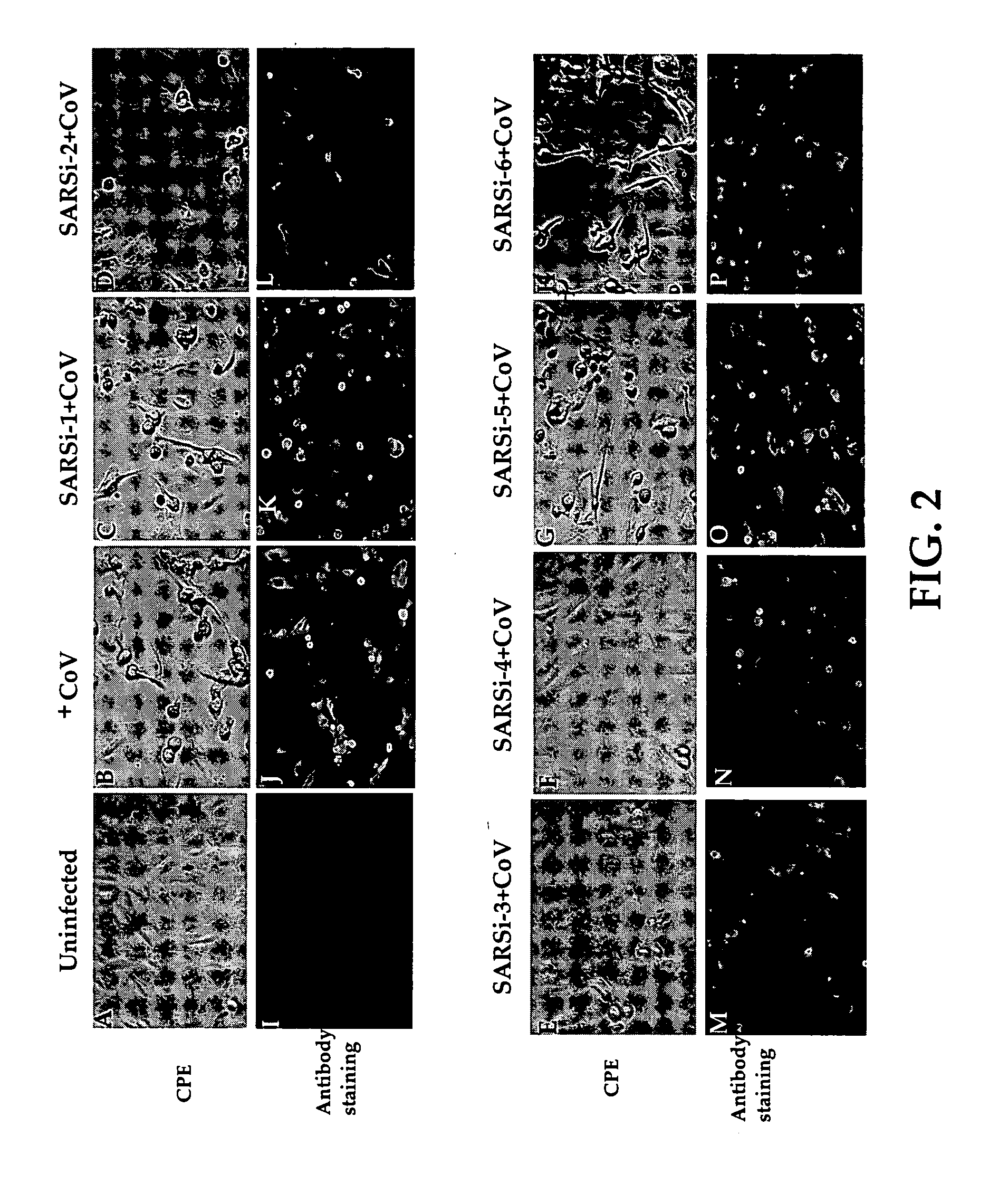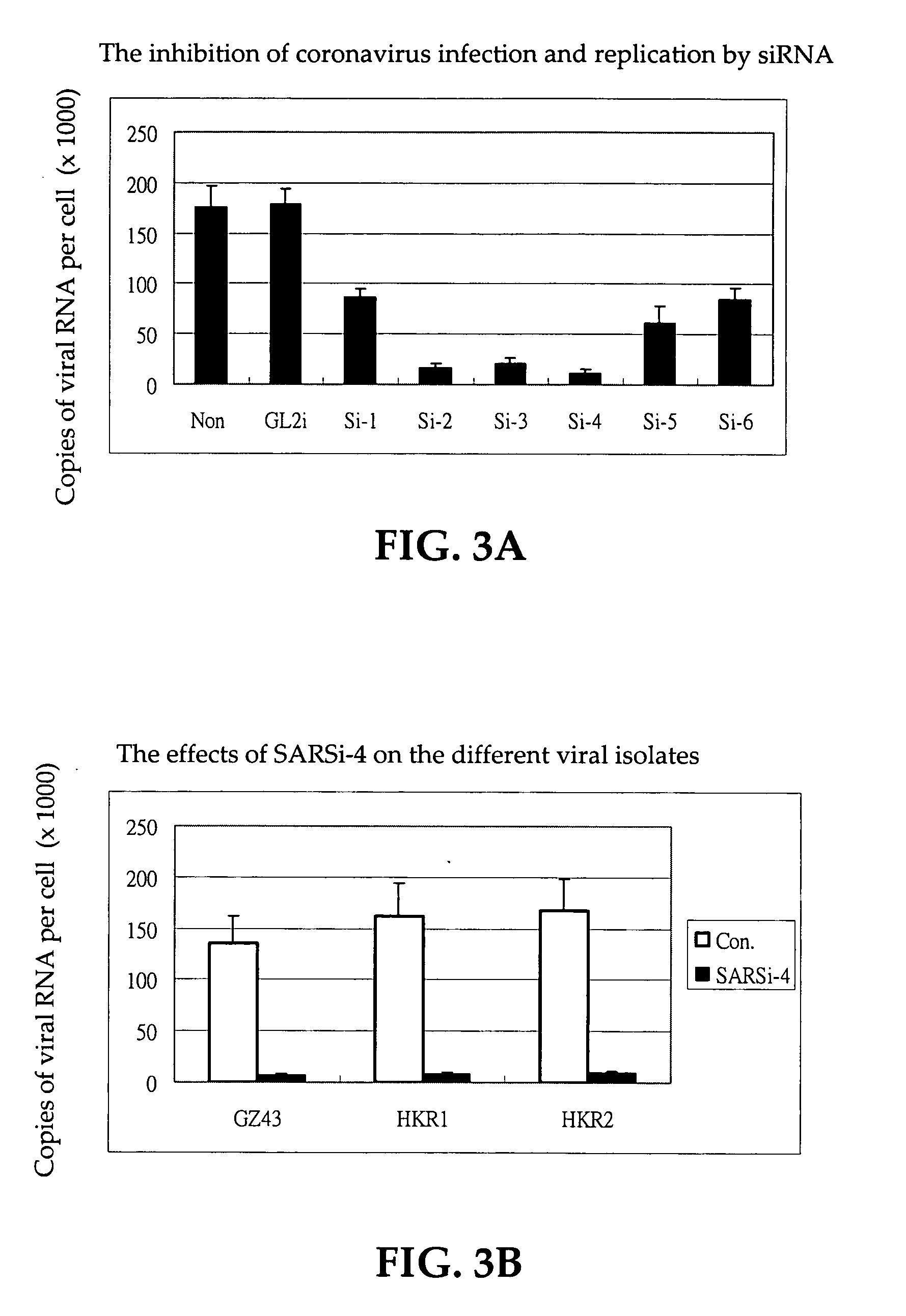Inhibition of SARS-associated coronavirus (SCoV) infection and replication by RNA interference
a coronavirus and sars technology, applied in the direction of viruses, peptides, dna/rna fragmentation, etc., can solve the problems of no known effective treatment for sars and pneumonia among patients
- Summary
- Abstract
- Description
- Claims
- Application Information
AI Technical Summary
Benefits of technology
Problems solved by technology
Method used
Image
Examples
Embodiment Construction
[0030] The present invention relates to RNA interference (RNAi) molecules useful for inhibiting coronavirus infection and replication. In particular, the invention relates to small interfering RNA (siRNA) and double-stranded RNA (dsRNA) useful for inhibiting coronavirus infection and replication. The present invention relates to nucleic acid molecules comprising portions of the genomic sequence of the hSARS virus, preferably the replicase region of the hSARS virus.
5.1 hSARS Virus
[0031] The present invention relates to the isolated hSARS virus that morphologically and phylogenetically relates to known Coronaviruses. In a specific embodiment, the virus comprises a nucleotide sequence of SEQ ID NO:1, 2, 3, 4, 5, 6, 7, 8, 9, 10 and / or 11. In a specific embodiment, the present invention provides isolated nucleic acid molecules of the hSARS virus, comprising, or, alternatively, consisting of the nucleotide sequence of SEQ ID NO:1, 2, 3, 4, 5, 6, 7, 8, 9, 10 and / or 11, a complement there...
PUM
| Property | Measurement | Unit |
|---|---|---|
| Immunogenicity | aaaaa | aaaaa |
Abstract
Description
Claims
Application Information
 Login to View More
Login to View More - R&D
- Intellectual Property
- Life Sciences
- Materials
- Tech Scout
- Unparalleled Data Quality
- Higher Quality Content
- 60% Fewer Hallucinations
Browse by: Latest US Patents, China's latest patents, Technical Efficacy Thesaurus, Application Domain, Technology Topic, Popular Technical Reports.
© 2025 PatSnap. All rights reserved.Legal|Privacy policy|Modern Slavery Act Transparency Statement|Sitemap|About US| Contact US: help@patsnap.com



